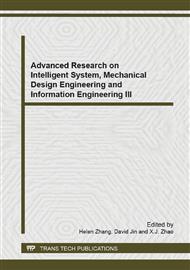p.231
p.235
p.239
p.245
p.249
p.253
p.257
p.261
p.265
Data Processing and Technology Application in Bayes and Empirical Bayes Reliability Analysis of Parameter of Ailamujia Distribution
Abstract:
The estimation of the parameter of the ЭРланга distribution is discussed based on complete samples. Bayes and empirical Bayesian estimators of the parameter of the ЭРланга distribution are obtained under squared error loss and LINEX loss by using conjugate prior inverse Gamma distribution. Finally, a Monte Carlo simulation example is used to compare the Bayes and empirical Bayes estimators with the maximum likelihood estimator.
Info:
Periodical:
Pages:
249-252
Citation:
Online since:
May 2014
Authors:
Price:
Сopyright:
© 2014 Trans Tech Publications Ltd. All Rights Reserved
Share:
Citation:


